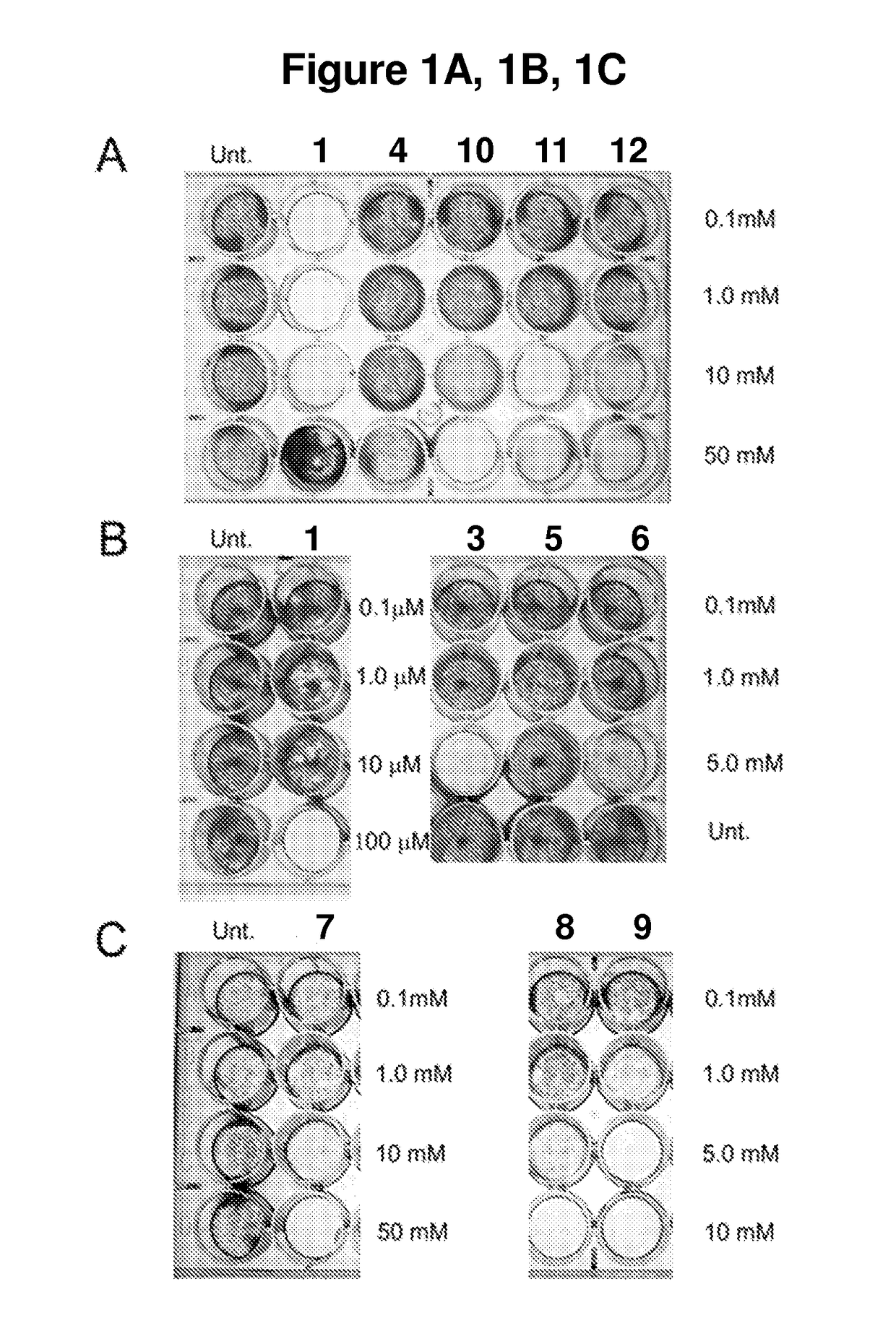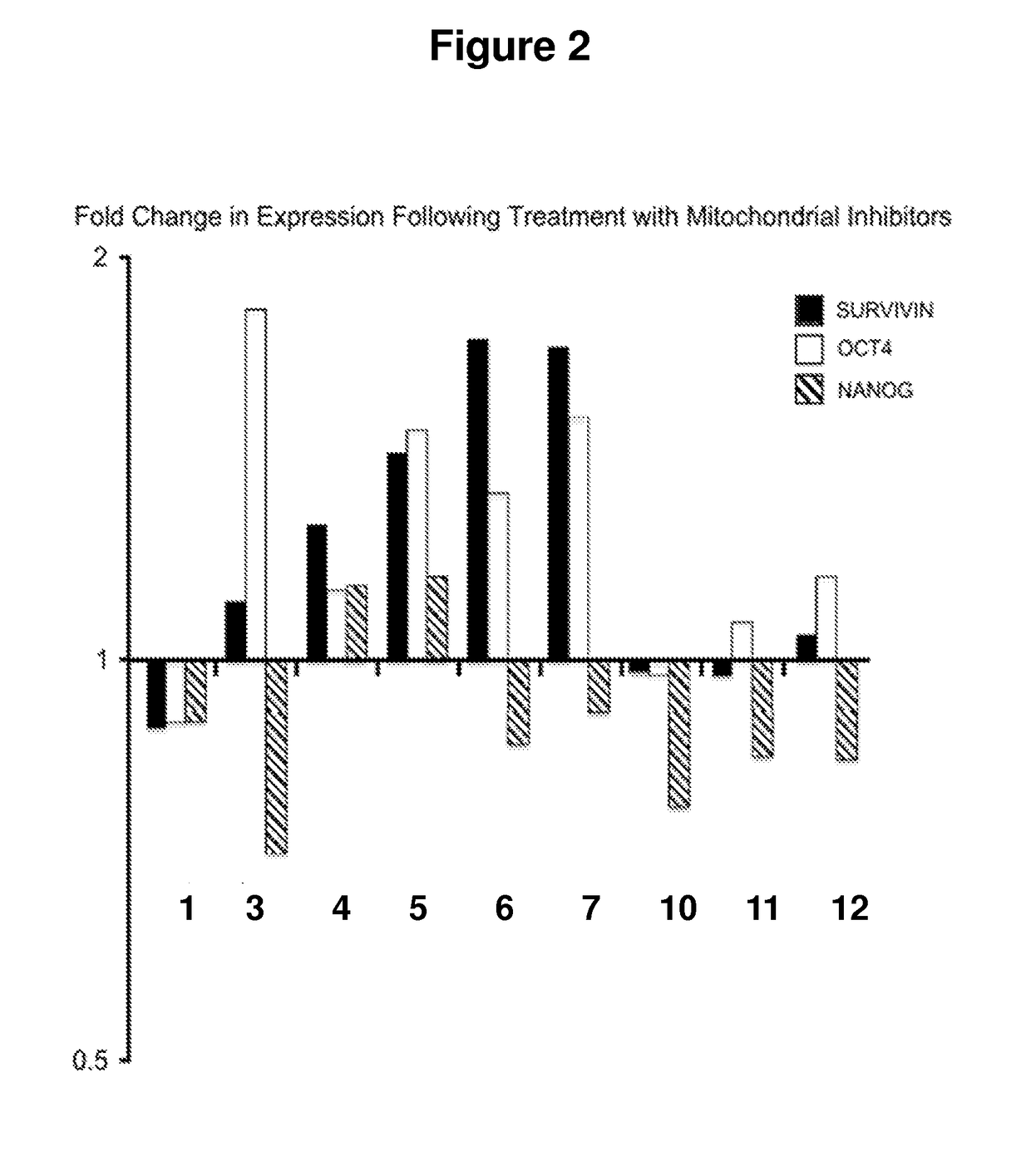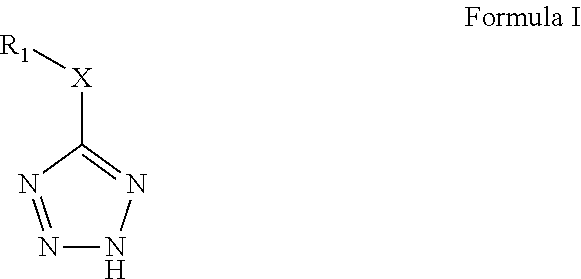Mitochondrial inhibitors for use in culturing pluripotent stem cells
a technology of mitochondrial inhibitors and stem cells, applied in cell culture active agents, organic chemistry, embryonic cells, etc., can solve the problems of complex mechanisms underlying the maintenance of self-renewal and pluripotency, inability to culturing pluripotent stem cells, and high toxicities
- Summary
- Abstract
- Description
- Claims
- Application Information
AI Technical Summary
Benefits of technology
Problems solved by technology
Method used
Image
Examples
example 1
[0101]A batch of twelve mitochondrial inhibitors (i.e. compounds 1-12 of Table 1) was first tested for toxicity against human embryonic stem cells. These compounds were initially tested at concentrations from 0.1 mM to 50 mM. Only compound 1 needed to be retested at lower concentrations of 0.1 to 100 μM, outside the initial range.
TABLE 1Compounds studiedCom-poundMolecular structureNomenclature1[2-[2-(4- methylthiazol-5- yl)ethoxy]-2-oxo- ethyl]-triphenyl- phosphoniumbromide25-benzylsulfanyl- 1H-tetrazole35-[(3R or 3S)- dithiolan-3- yl]pentanoic acid (i.e. lipoic acid as a racemate)45-methylthiazole53-methyl-4-phenyl- 1H-imidazole-2- thione (i.e. 5- phenylmethimazole)6ethyl 2-(1H- tetrazol-5-yl)acetate71H-tetrazol-5-amine (i.e. 5- aminotetrazole)8diethyl 1H-triazole- 4,5-dicarboxylate94,5-dibromo-1H- triazole105-methyl-1H- tetrazole (comparative example)112-(1H-tetrazol-5- yl)acetic acid125-methylsulfanyl- 1H-tetrazole
example 2
[0102]Based on the toxicity results, nine of the above twelve compounds in Example 1 were selected for further screening to assess their effects on the expression of OCT4, NANOG and SURVIVIN in human embryonic stem cells. The results are summarized in Table 2, along with the mitochondrial inhibition activities for these compounds which were disclosed in US20110301180A1 to Collman et al. the content of which has been incorporated herein by reference.
[0103]The pluripotency of these cultured human embryonic stem cells were characterized by the marker gene expression as analyzed by Quantitative Reverse Transcriptase PCR (qRT-PCR). All compounds were tested at 1 mM concentration for 72 hours except for compound 1 which was tested at 10 μM. The results of the analysis are compiled in Table 2. The reversibility of mitochondrial inhibition is presented in the right column.
TABLE 2Inhibition / One ofReversibilityExpressionthe genesinCom-relative tooverexpressedmitochondrialpoundGenecontrolby at...
PUM
 Login to View More
Login to View More Abstract
Description
Claims
Application Information
 Login to View More
Login to View More - R&D
- Intellectual Property
- Life Sciences
- Materials
- Tech Scout
- Unparalleled Data Quality
- Higher Quality Content
- 60% Fewer Hallucinations
Browse by: Latest US Patents, China's latest patents, Technical Efficacy Thesaurus, Application Domain, Technology Topic, Popular Technical Reports.
© 2025 PatSnap. All rights reserved.Legal|Privacy policy|Modern Slavery Act Transparency Statement|Sitemap|About US| Contact US: help@patsnap.com



